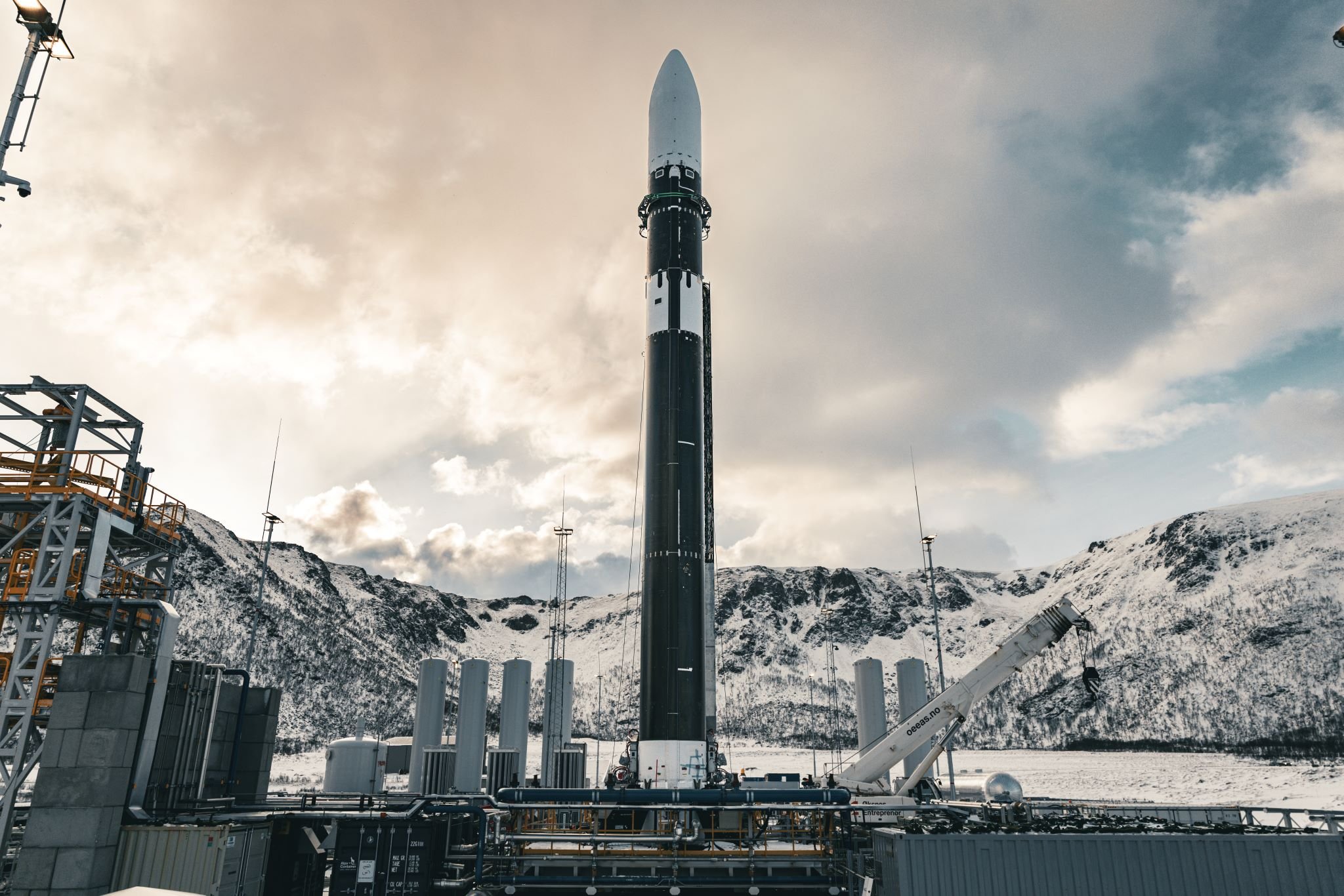Going Full Spectrum: Isar Aerospace’s maiden launch!
Isar Aerospace, a German commercial aerospace company founded in 2018, is targeting March 30th, 2025, for the maiden launch of their Spectrum rocket from Andoya Spaceport in Norway, nicknamed “Going Full Spectrum.” The launch window will go from 12:30pm to 15:30pm CEST. This historic launch will not only mark the company’s first but also the first orbital launch attempt from continental Europe and the first commercial European orbital launch.
Isar Aerospace
Isar Aerospace was founded in March 2018 with the goal of becoming a leading space company in Europe and globally, enabling cost-effective, safe, reliable, and sustainable access to space. Over the past years, the employees at Isar Aerospace (who are now more than 400 from 50 different nations) have been working on designing and manufacturing their Spectrum rocket, with the development that started around September 2020 with the goal of producing at least 80% of their rocket in-house. Now, let’s explore their product:
Spectrum
Spectrum at the launch pad ahead of launch. Credit: Isar Aerospace
Spectrum is an orbital launch vehicle endowed with 2 stages:
The first stage, made of carbon composites, is powered by 9 Aquila engines; these engines are gas-generator cycle engines (like the Merlin engines on Falcon 9), where a small amount of fuel and oxidizer is burned in a gas generator (the preburner) to power the turbopumps with their exhaust. Each Aquila engine produces 75 kN of thrust at sea level, providing the necessary thrust to lift off and deliver the payloads to orbit. The first stage conducted a 9-engine, 30-second-long static fire on February 14th, 2025.
Spectrum during integrated static fire testing. Credit: Isar Aerospace
The second stage is made of carbon composites as well, and it’s powered by 1 Aquila Vacuum engine, whose thrust is 95 kN. The second stage has multi-ignition capabilities, allowing the rocket to deliver payloads to their desired orbit without the addition of a kick stage (like Electron has). Atop the second stage, the fairing encloses the payload, which, as we’ve said, can weigh up to 1000 kg to LEO or 700 kg to SSO. Spectrum’s payload capabilities can offer a single dedicated payload, a multi-payload, or even a rideshare mission to a predefined orbit. The second stage conducted its integrated static fire in Q3 2024.
Both stages use liquid oxygen as oxidizer and propane as propellant, allowing a cleaner burn compared to other similar rockets. Overall, Spectrum is 28 m high and 2 m wide.
Isar Aerospace has manufactured Spectrum in-house with technologically advanced manufacturing processes, such as additive manufacturing, 3D printing (for the nozzle and combustion chamber of Aquila, among others), and carbon composites development.
Launch sites
In April 2021, Isar Aerospace signed a 20-year contract to build an orbital launch pad at Andoya Spaceport, in Norway, for launches between 87.4° and 108° of inclination. In July 2022, Isar Aerospace also signed a contract with CNES to use the launch pad formerly used by the Diamant rocket in French Guyana; this launch site will allow launches to equatorial, near-equatorial, and mid-inclination orbits. In 2023, work at the launch site in Norway was completed.
Mission details: Why is this important?
The launch period for Going Full Spectrum opened on March 20th and will continue to go until March 30th, although it can extended to April 6th if needed. Isar Aerospace then stated that their first launch attempt would be March 24th, during a 3-hour window opening at 12:30pm CET. During this attempt, the launch was scrubbed soon after the window opened due to unfavorable weather; their second attempt, on March 29th, was scrubbed for similar reasons, a few hours before launch. The mission profile plan is to launch to a 95° inclination orbit (per NOTAMs), complete stage 1 burn, conduct low-shock separation of the stages, and then ignite the second stage engine. During the burn, fairing separation will occur, although no payload will be brought on this flight; the last milestone is orbit insertion of the second stage and shutdown of the engine. As far as we know, they aren’t targeting an engine re-ignition. However, this is the plan: like they’ve stated, the main goal for this flight is to gather data on the performance of the vehicle during integrated flight testing. This is important if you haven’t followed rocket launches for long: failing to do something is still a success. It doesn’t matter if Spectrum will reach orbit or not, because the important thing is to launch and gather real data from real conditions — not from a test stand, not from a simulation, but from a real flight. However, we still hope that Spectrum reaches orbit, and if it does, it will mark the first orbital launch from continental Europe and the first commercial orbital launch from Europe. And that’s really something!
Despite their initial decision, Isar Aerospace has decided to conduct an official livestream with NASASpaceflight, which you can watch here. You can also follow live updates here and post-flight news here, and you can read our post-launch article! Also, we recommend you watch our writer’s and partner’s videos: this from Tom Zenoth and this from Kion. Additionally, Kion will make a dedicated launch livestream! Enjoy!
References
First Test Flight - Press Kit Mission „Going Full Spectrum“

